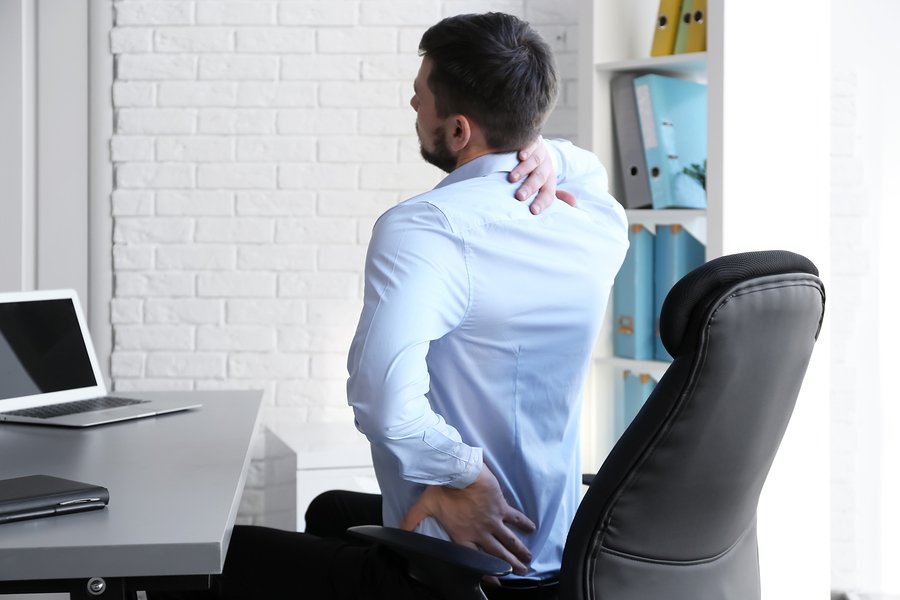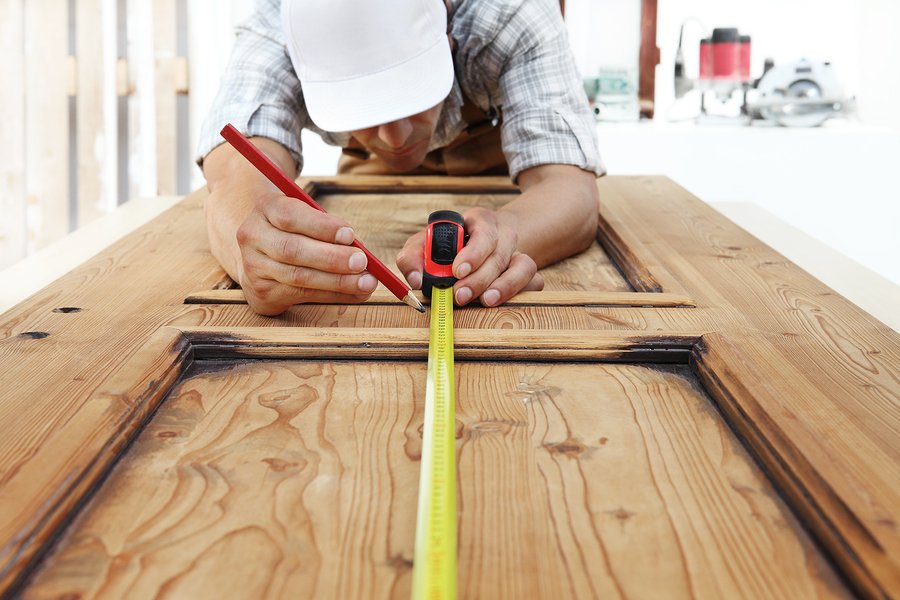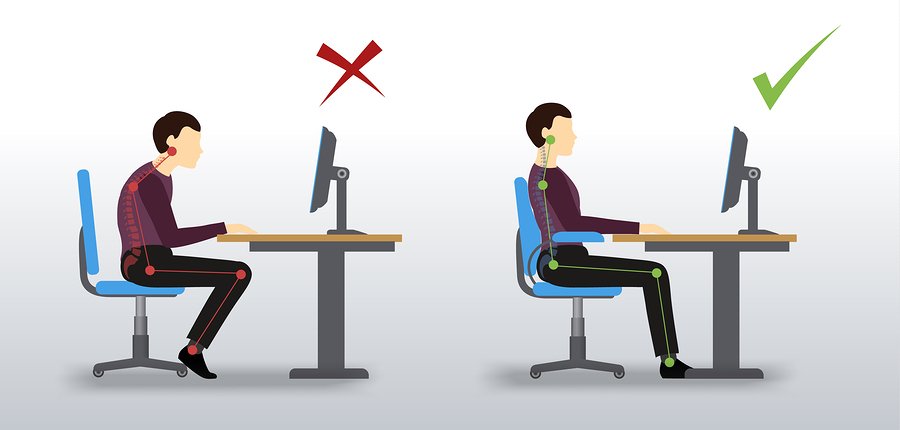Do you experience dull throbbing? Sharp pains? Or recurring aches?
For many, the first thought is “how did I get that?”
You think back to the evening jog, or the last time you went to the gym. You must have done something wrong – it’s the only theory that makes sense.
But what if we told you it wasn’t?
You might be surprised to hear that an injury event isn’t the only thing that can cause musculoskeletal pain. In fact, just as common are ergonomic problems!
The art of ergonomics
According to the Victorian Trades Council’s body of OHS inspectors, ergonomics is:
“The design of systems, processes, equipment and the environment… making sure that they are within their capabilities and limitations.”
Basically, ergonomics is all about designing your work environment in such a way that it minimises the risk of physical injury and strain, resulting in a happier, healthier, and more productive workplace.
Ergonomics applies to all workplaces, and not just the physically demanding ones like factories and construction sites. Even office spaces need to think about ergonomics!
This is because ergonomics directly affects how you carry out your work, no matter what that kind of work may be.
Poor ergonomics force you to use your body is less-than-optimal ways, which in turn dramatically increases your risk of musculoskeletal problems and pain.
How poor ergonomics can lead to…
Bad posture
When it comes to office jobs (as well as some seated manufacturing roles), one of the most common musculoskeletal problems you face isn’t overexerting yourself or injury – it’s poor posture!
Your back is designed to stand upright. This is the optimal way of distributing your weight, and minimises the stress on your body.
Ergonomically-designed seating is shaped in such a way that it helps maintain your posture. That means having cushioning in all the right places (including lumbar support for your lower back) and being firm where it needs to be.
Of course, poor ergonomics – i.e. uncomfortable or unsuitable seating – can force you to slouch or hunch over.
As a result, your posture can suffer – office workers and students are especially vulnerable.
Needless to say, this isn’t ideal and puts unnecessary pressure on your muscles.
This can directly lead to…
Back pain
We’ve talked about the link between sitting, posture and back pain before. If you missed that article, you can click here to catch up.
In brief though, poor posture puts weight on parts of your back that just weren’t designed for it. This strains the muscles in your back, weakening them and over time, leading to back pain.
Neck pain
We spend a lot more time looking down than our grandparents ever did. Computer screens, laptops, smartphones… each is indispensable to our modern lifestyle.
What you mightn’t have known however is that overuse can be a pain in the neck – literally!
In fact, this ailment is so common that it’s even got its own name: tech-neck.
Spending extended periods of time looking down changes our posture. In particular, it strains our necks and shoulders by forcing them into awkward positions that lead to neck pain.
Muscle sprains and damage
Those with physically demanding jobs should take extra care to avoid causing unnecessary injury.
Jobs that involve a lot of manual labour like lifting need to be designed to minimise the risk of injury and muscle damage.
That includes minimising the physical strain on your body, or putting in measures to break up jobs that require repetitive movements.
Thanks to poor ergonomics, a lot of physical labour ends up being too physical for the human body to sustain long-term.
The result? Muscle pain.
Exercise injuries
Work isn’t the only place ergonomics matter – they come into the picture when exercising too.
In particular, ergonomics are important when selecting shoes. Different shoes absorb impact differently.
And since everybody has a unique run, your running shoes need to be chosen to accommodate.
Click here to read our article about choosing the best shoes for your unique running style.
Ergonomics in physically-intensive jobs
We all know that physically intensive jobs present dramatically higher risk of pain in the future.
Up to 64% of tradies reported injuries in their current job, and of these, half said they expected more in the future.
As such, ergonomics in jobs with physical labour revolves around reducing the strain on your body.
That might mean starting with equipment that encourages good posture.
Additionally, that can also mean measures to break up physical labour. Regular breaks are a great tool – another is using machinery to minimise how much you need to use your muscles while working. Why risk straining your arm muscles when you could use a winch system to lug heavy loads around?
Ergonomics in office jobs
In contrast, ergonomics in office jobs focus on maintaining good posture. It’s easy to develop a slouch after years working at a desk.
One way is to use ergonomically designed office chairs. These feature padding that help maintain good posture. Not to mention, they’re super comfy!
Another way you can improve ergonomics around the office is with ergonomic keyboards and mouse pads.
A surprising number of physio cases we see are for finger, hand and wrist pain. Many of these are caused by holding your hands and wrists up to reach your keyboard, depriving them of the support they need.
Finally, your monitor should be about an arms’ length away. Position your chair so that your eye line is level with the top of the screen. This forces you to look forward instead of angling your head down and suffering neck pain.
How your physiotherapist in Highett can help
While our focus is on helping muscles recover using physical therapy, for lasting solutions to your muscle pain you’ll also need to look at ergonomics.
At Physio AUS, we take a of a unique approach to physiotherapy. On top of just diagnosing the causes of your pain, our experienced team prescribe tailored treatment routines.
These include the standard treatments like strength-building exercises, stretches and physical therapy.
In the case of overuse and posture-related pain however, it also involves looking at how we can use ergonomics to ease your recovery.
That can mean:
- Prescribing ergonomic tools and supports
- Modifying how you use your body
- Evaluating your technique and recommending improvements
Need a physiotherapist in Highett to look at your pain?
Get in touch with Physio AUS today – call us on 1300 392 552, or book your session to see how we can help you overcome your pain!

 1300 392 552
1300 392 552


Leave A Comment